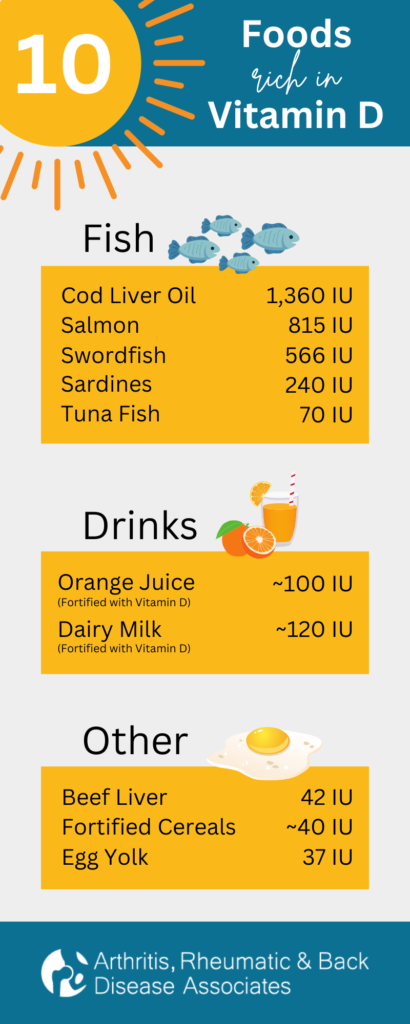Healthcare providers and, especially, orthopedic doctors refer to osteoporosis as a “silent disease” because bone loss oftentimes occurs without symptoms. For most patients, the first sign of osteoporosis is a low-impact fracture, such as a broken bone from a relatively minor fall or accident.
Osteoporosis can affect men and women of all races, and the risk of developing this disease increases with age. Bone density, which measures the number of minerals in your bones, is at its highest between the ages of 25 and 30. By the time we hit 50, the rate of bone loss outpaces bone formation.1
As with all diseases, prevention is better than cure. This is especially true for osteoporosis, which cannot be completely reversed. However, people with osteoporosis can take steps to slow down bone loss.
Eating healthier is an easy lifestyle change that can help keep bones strong. Calcium is the key nutrient needed for bone health — but if you’re already consuming the recommended amount of dairy products and dark green, leafy vegetables, what more can you do? Vitamin D might be the answer.
Before making any changes to your diet, consult a top osteoporosis specialist in New Jersey! ARBDA has an Osteoporosis Treatment Center with a team of experts who can help prevent, diagnose, and manage this silent disease.
Does Vitamin D Help Osteoporosis?
Vitamin D plays an important role by helping your body absorb calcium and phosphorus, two key minerals for bone health.2 It also ensures the correct renewal and mineralization of bone.3 Moreover, Vitamin D can reduce the risk of falling by promoting skeletal muscle regeneration to increase muscle strength.4
Extensive studies have been conducted on the role of Vitamin D supplements in osteoporosis, and the results show that this nutrient is essential for ensuring optimal risk reduction and fracture prevention. In fact, Vitamin D deficiency, which is a widespread issue among American adults, has been associated with an increased occurrence of hip fractures.5
Vitamin D Deficiency and Osteoporosis
Vitamin D deficiency is a major public health concern affecting approximately 35% of adults in the United States.6 Its symptoms aren’t very obvious and can sometimes even be invisible, much like osteoporosis.
- Bone pain
- Muscle weakness
- Fatigue
- Mood changes
Bone loss and secondary hyperparathyroidism (a condition that causes high calcium levels in the bloodstream, therefore weakening bones) can develop following Vitamin D deficiency, leading to osteopenia/osteoporosis and the increased risk of fractures.7
The best way to fight Vitamin D deficiency is by increasing exposure to sunlight and having the right diet. In cases where more intense Vitamin D replenishment is necessary, your ARBDA Rheumatologist has prescription medication to get you back on track.

The recommended amount of Vitamin D varies by age, medical conditions, and other factors. However, the limited amount of food sources high in Vitamin D means that supplements are almost always necessary.8
Turn to the Osteoporosis Specialists at ARBDA!
Vitamin D supplements play an important role in the prevention and management of osteoporosis, and if you’re worried about your bone health, you might be wondering if supplements are the right solution for you. Before you visit your local drugstore, get in touch with your ARBDA doctor to determine the best course of action.
ARBDA has some of the best doctors for osteoporosis, and we would be happy to help you! Contact us to schedule an appointment at any of our six New Jersey locations.
3https://www.osteoporosis.foundation/patients/prevention/vitamin-d
4https://www.ncbi.nlm.nih.gov/pmc/articles/PMC3513873/
5https://www.ncbi.nlm.nih.gov/pmc/articles/PMC2621390/.
7https://pubmed.ncbi.nlm.nih.gov/21872800/#:~:text=The%20consequences%20of%20vitamin%20D,weakness%2C%20causing%20falls%20and%20fractures.

